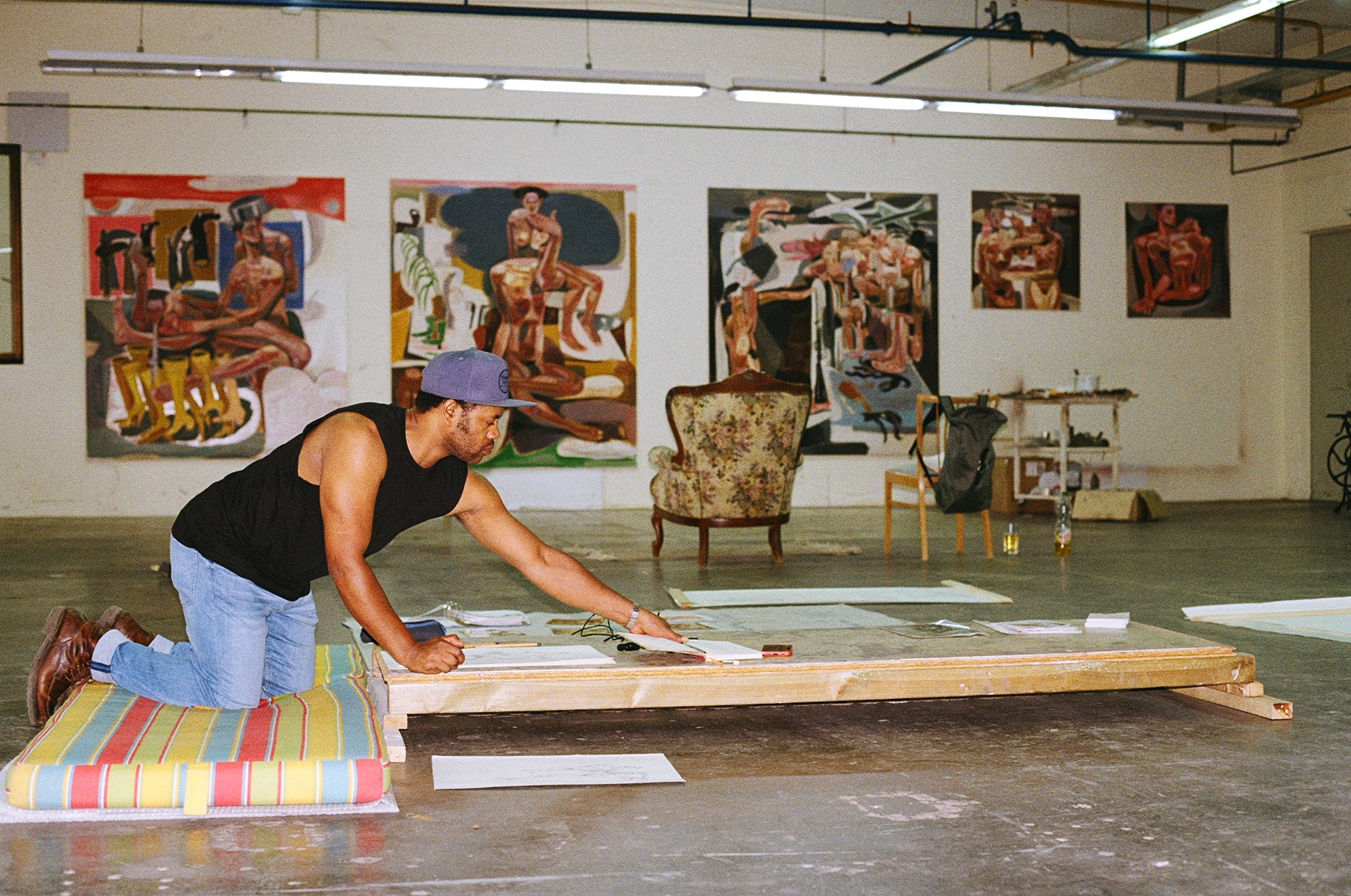Since 2016, Tesfaye Urgessa has made upward of 20 paintings under the title No Country For Young Men, spurred on by a news report detailing the overwhelming figure of displaced people worldwide. At the time, the number was more than 50 million; this year it’s projected to be over 100 million, a high percentage of which will be young men. “I was shocked,” recalls the artist, “I thought I knew about migration – my wife works with refugees and I’ve translated for her – but I never had the real figure. It felt so cruel, you know?” The subsequent works depict groups of tightly packed figures with limbs of soft, muted tones marching in various directions, produced on large box-shaped canvases.
“After listening to this news, I heard footsteps in my sleep. After a week or two, that was the only thing I saw in my dreams, then I started painting the feet,” he says, speaking over Zoom from Ethiopia, where he lived until moving to Germany in 2009. For his new Miami show with London gallery Saatchi Yates, the artist has produced 15 new pieces, amongst them the series Frozen Feet (No Country For Young Men), which returns to the topic of migration but redirects the viewer’s focus with tight crops of hands, feet and ankles.

Growing up in Addis Ababa, Tesfaye initially had intentions of becoming an architect. “At the time it was the highest paid job because Addis Ababa was being built up, so it was guaranteed you’d get rich,” he explains. “But I went to art school. It was a shock for the neighbours, but my father just said ‘he wants to be an artist, that’s his interest’.” Tesfaye’s father played a key role in his introduction to the visual arts, having taught himself to draw with charcoal in his forties – many of those same neighbours posed for him and proudly displayed the pictures in their homes. He was also responsible for buying the fashion magazines from which Tesfaye fine-tuned his early portraits in his late teens.
SUBSCRIBE TO I-D NEWSFLASH. A WEEKLY NEWSLETTER DELIVERED TO YOUR INBOX ON FRIDAYS.
Prior to the models and celebrities he found in their pages though, the artist practiced by painting saints. “We have a long tradition of church painting [in Ethiopia],” he says, referencing the country’s large Christian-Orthodox community. “I painted so many icons. Then I discovered art school.” While at Alle School of Fine Art and Design he studied under Tadesse Mesfin, a leading figure of Ethiopia’s modernist movement, before moving to Stuttgart to continue his practice at Staatlichen Akademie der Bildende Kunst.
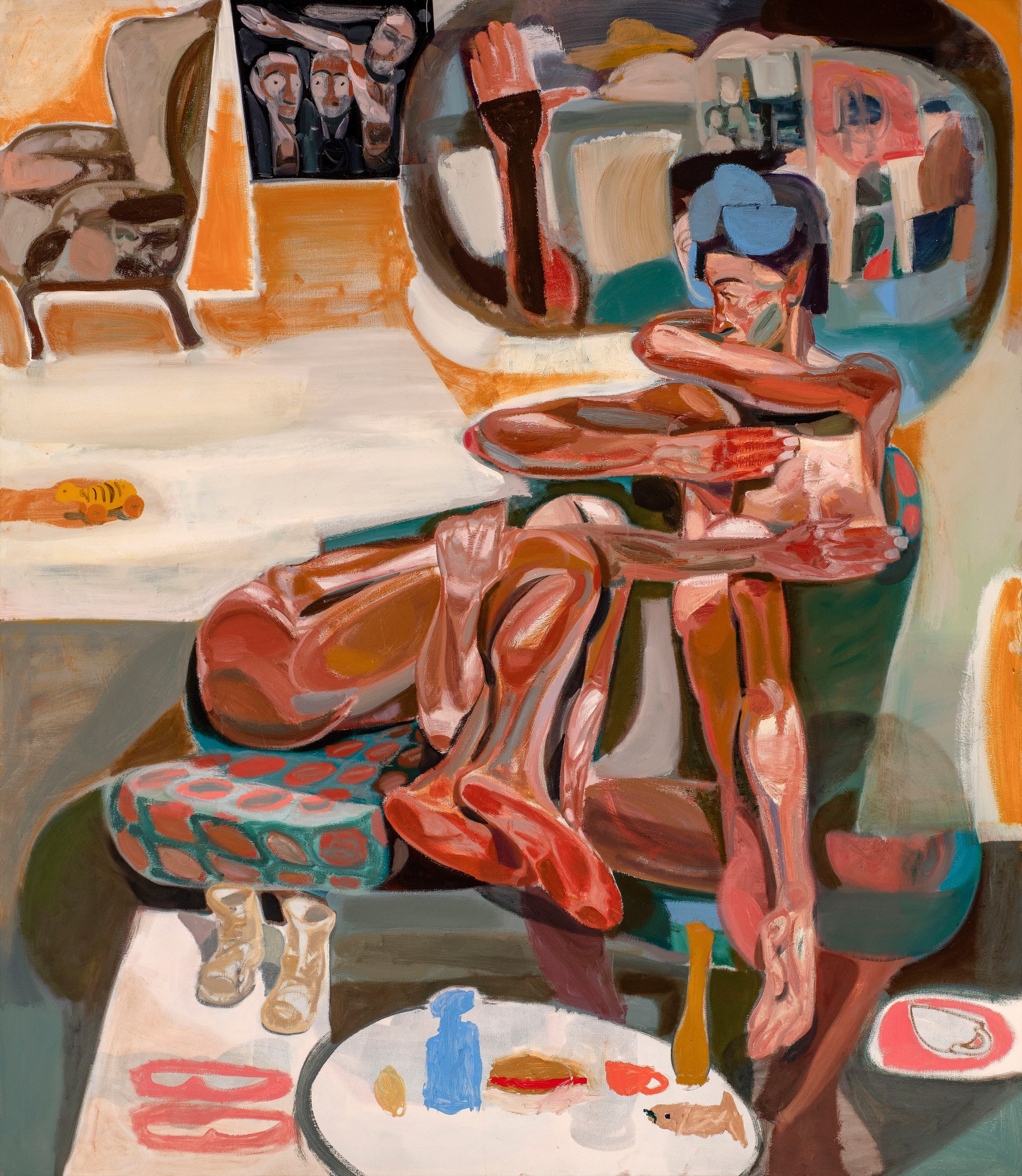
Today, living and working in Nürtingen, Ethiopian iconography continues to shape Tesfaye’s work, while the influence of German neo-expressionism and cubism can also be found in his paintings. It was later, learning about Caravaggio and his use of chiaroscuro, a technique dealing in concealment, however, that proved particularly significant. “I used to struggle because I was filling the gaps, but now when I’m painting, I just select what I need. People don’t notice the missing part, it looks normal,” he notes, alluding to the figures that occupy his canvases. “I take from real people, but I’m not imitating them.”
His Miami show (open through 20th December), features some of his biggest canvases to date. Size, he suggests, plays a distinct role in his sentimentality towards a piece. “A large painting marks the year, it captures everything [that happened in the studio at the time]. Whenever I see that painting, I remember what happened that year,” he says. The mammoth proportions also serve the idea of the reversal gaze, something he revisits often, while the soundtrack he imparts on each painting is similarly consequential. “I listen to everything, from rock to Indian sitar, but I will just repeat one song the whole time I’m working because I like to remember that mood. If the music changes, I become sort of detached. When I was studying this meant arriving at six in the morning – the other students arrived at 10.”
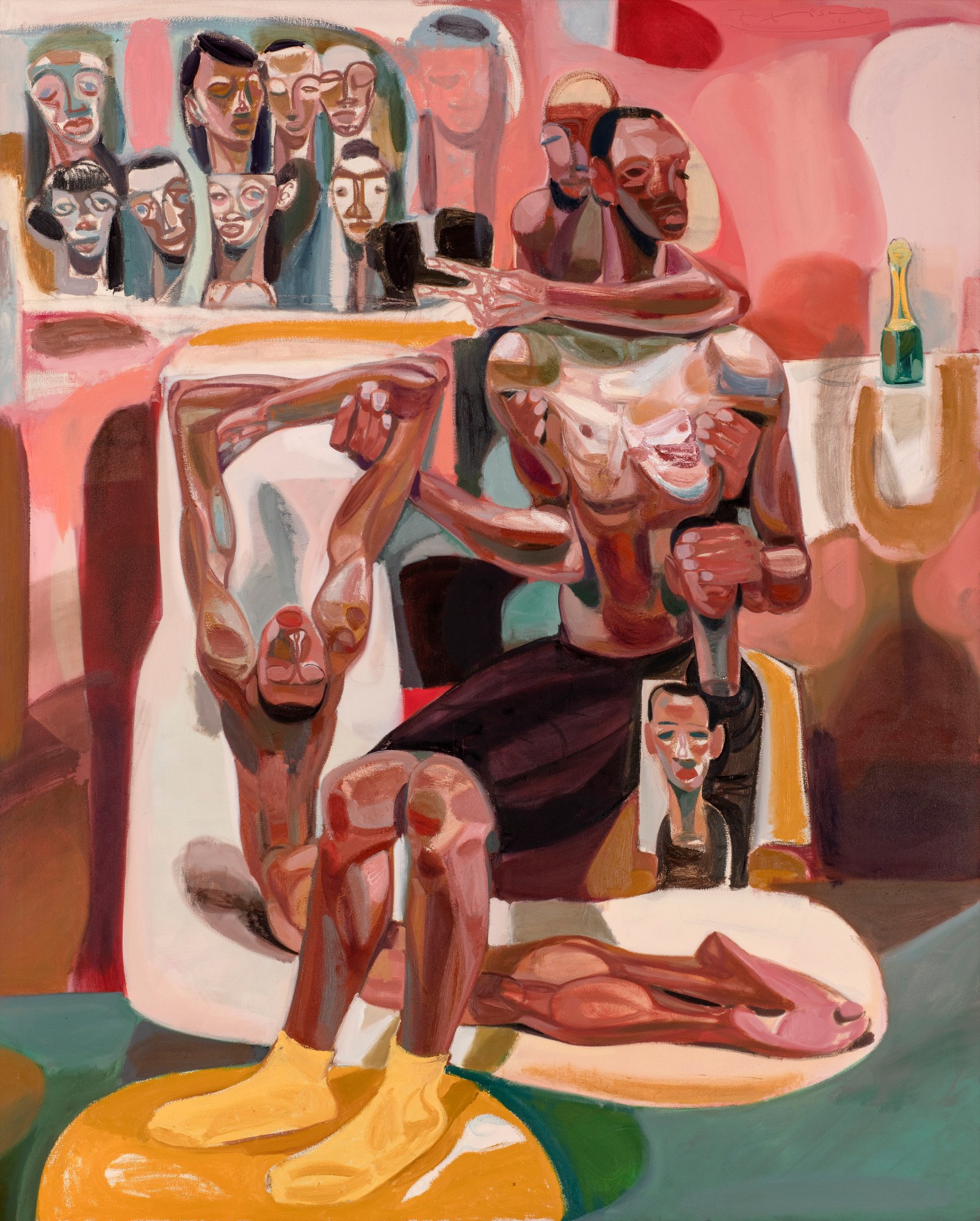
While Tesfaye frequently considers subjects like race and identity in his paintings — his latest body of work explores surveillance, a nod to French philosopher Michel Foucault and his own experiences of racist questioning — the political content of his pieces isn’t necessarily intentional. “I’m just looking at society, and politics influences your life. When I paint I don’t have a theme, I go to the studio and paint whatever comes,” he explains. “When I was a student, it was required that we come up with a theme, do research and develop the painting from a sketch. But [now] I’m more free, I just collect images, pay attention to what’s happening around me, listen and watch.”
‘Tesfaye Urgessa in Miami’ is on 20th November 2022 – 2nd January 2023 at Saatchi Yates’ temporary gallery space next to the Institute of Contemporary Art and De La Cruz Collection
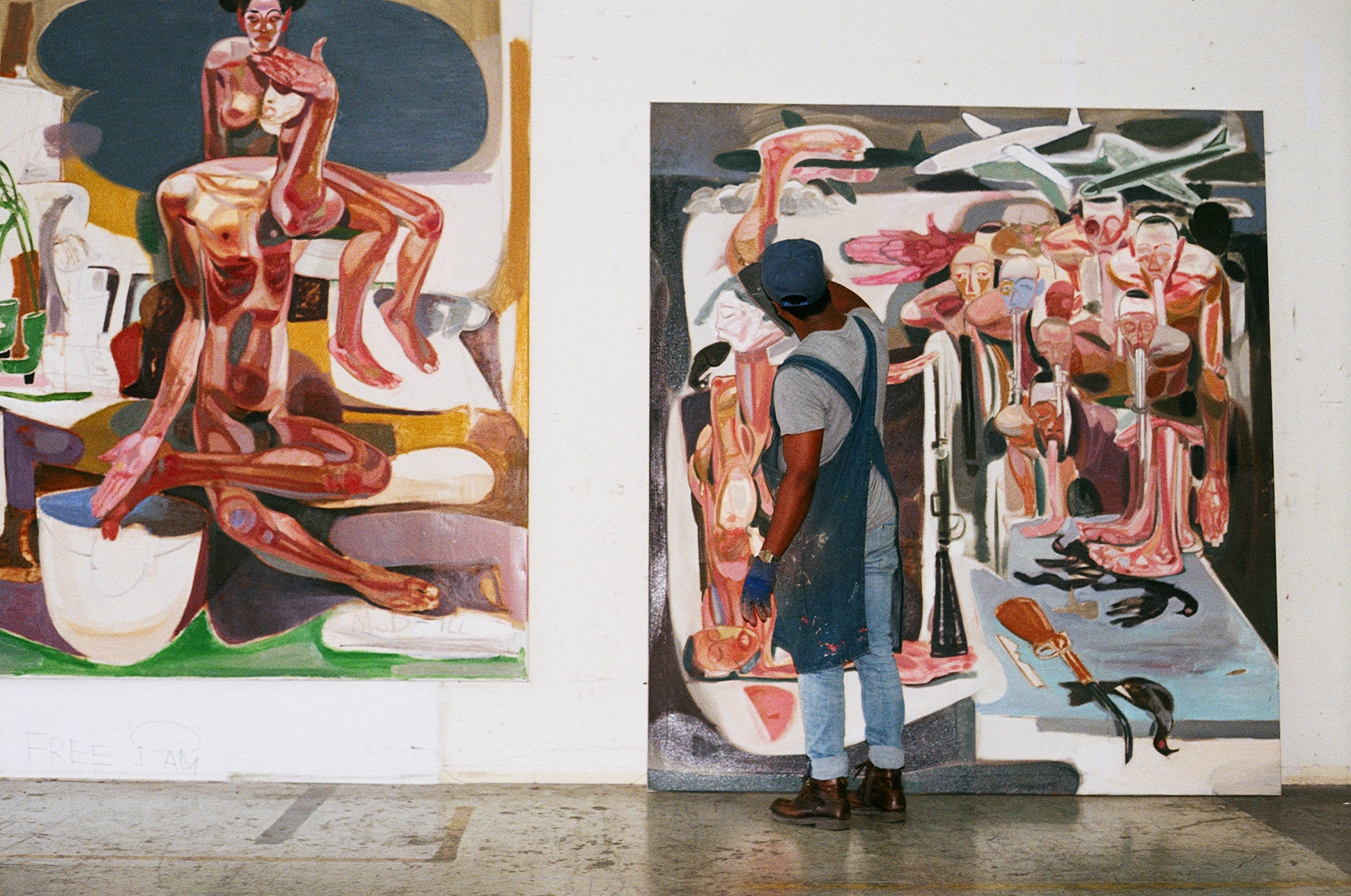

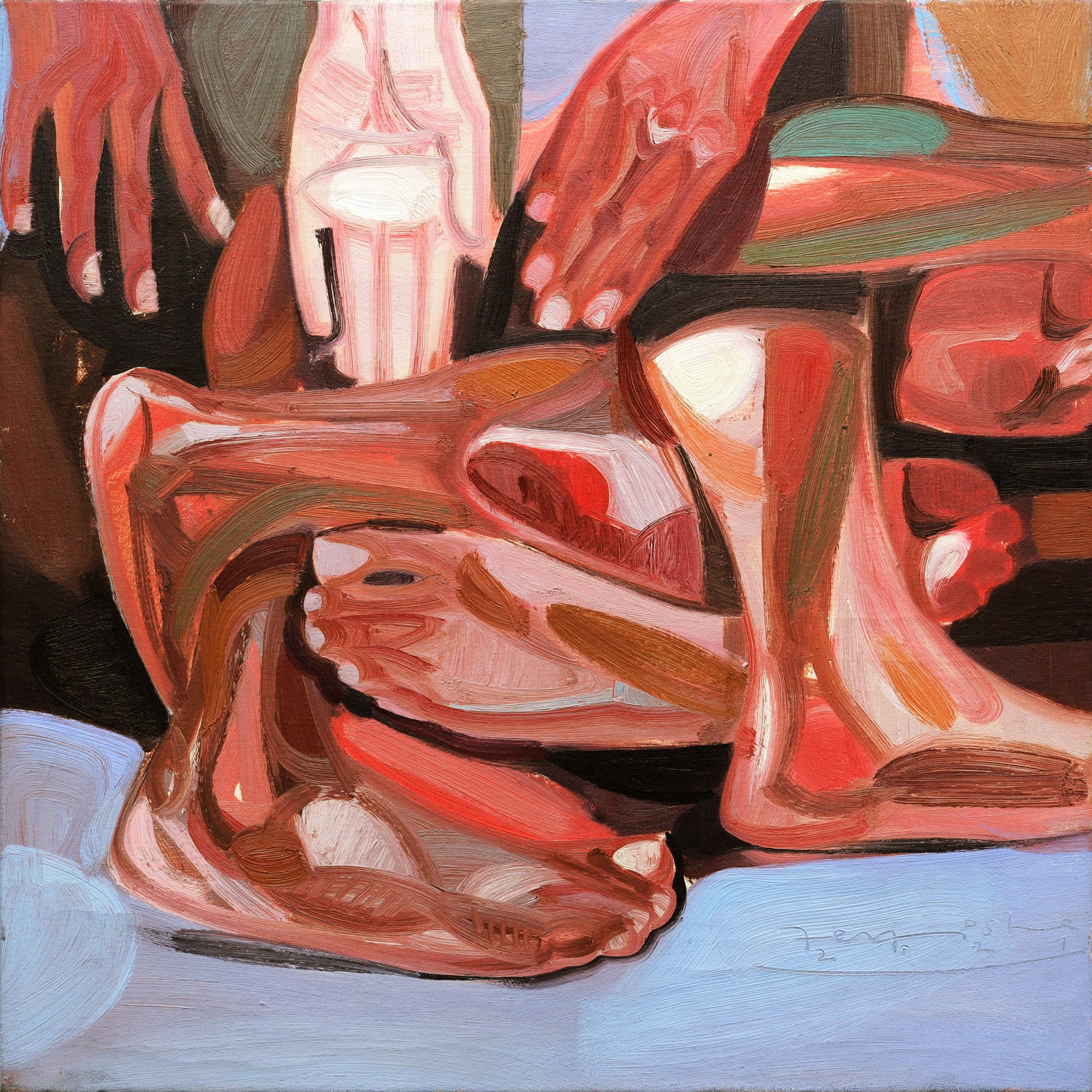

Credits
All images courtesy of the artist and Saatchi Yates
